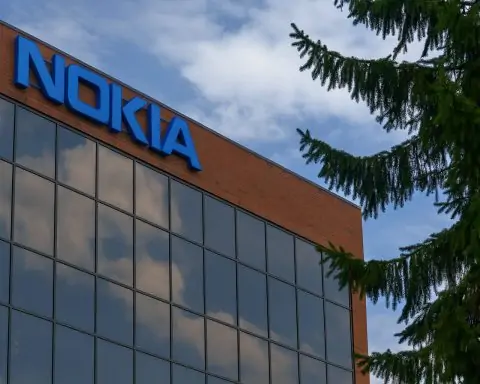- Modest Production Boost: The OPEC+ alliance (OPEC plus Russia and other oil exporters) agreed on Oct. 5, 2025 to raise crude output by 137,000 barrels per day starting in November – the same small increase as implemented in October [1]. This extends a gradual rollback of last year’s deep production cuts.
- Brent Holds Near $65: Oil prices jumped over 1% on Monday after the smaller-than-expected OPEC+ hike eased fears of oversupply, with Brent crude around $65.5 per barrel [2]. By Tuesday, prices were steady near those levels [3] (U.S. WTI crude hovered ~$61.7).
- Balancing Act for OPEC+: OPEC+ insists the outlook is “steady” with “healthy” market fundamentals [4]. However, experts warn the group is “walking a tightrope” – trying to regain market share without flooding the market and crashing prices [5].
- Surplus on the Horizon: Many analysts expect an oil supply glut by late 2025 into 2026 as demand growth slows and output rises. They predict a surplus in coming months [6], risking downward pressure on prices.
- Internal Split Resolved: Key producers initially clashed over the hike size – Russia advocated only a minimal increase (citing oversupply worries and its constrained capacity), while Saudi Arabia pushed for a much larger boost (up to ~548,000 bpd) to reclaim market share [7]. The compromise stuck with the modest 137,000 bpd hike.
- Geopolitics Buoy Prices: War and supply risks have kept a floor under oil prices even as more barrels hit the market. The Russia-Ukraine conflict, for example, knocked a major Russian refinery offline in early October [8]. Meanwhile strong summer fuel demand and heavy Chinese stockpiling of crude have also helped support prices in recent months [9].
OPEC+ Opts for a Small Output Hike
On October 5, the Organization of the Petroleum Exporting Countries and its allies (“OPEC+”) surprised some traders by approving only a modest production increase for November. The coalition’s 23 oil-producing nations agreed to add 137,000 barrels per day (bpd) next month – identical to the minimal hike implemented in October [10]. By historical standards this boost is quite small, amounting to only about 0.14% of global supply.
OPEC+ framed the move as a cautious response to market conditions, citing a “steady global economic outlook and current healthy market fundamentals” in its decision [11]. In other words, the cartel believes oil demand and inventories are stable enough to absorb a bit more production. The new quota increase continues OPEC’s gradual unwinding of earlier output cuts that were put in place when the COVID-19 pandemic and geopolitical turmoil hit demand. After slashing volumes in 2023 to prop up prices, OPEC+ began slowly restoring barrels this year. The October and November additions effectively roll back the last of those voluntary cuts by year-end [12], returning output to pre-cut levels.
Crucially, OPEC+ has signaled it will proceed carefully. The group even noted that it “may pause or reverse” the production adjustments if market conditions deteriorate [13] – a nod to lingering uncertainty about whether the world can absorb extra oil. This flexibility underscores the cartel’s cautious stance as it increases supply.
Saudi vs. Russia: Divided Over Strategy
Behind the unified OPEC+ announcement was a sharp internal debate between its two most influential members. In the run-up to the October 5 meeting, Russia pushed to keep the production hike limited to 137,000 bpd again, the same as the prior month, warning against over-supplying the market [14]. Russian output is already constrained by Western sanctions over the Ukraine war, so Moscow favored a conservative approach that wouldn’t further depress prices [15].
Saudi Arabia, by contrast, initially lobbied for a much larger increase – proposing to double, triple, or even quadruple the base amount (up to roughly 548,000 bpd) given its ample spare capacity [16]. The Saudis were eager to regain market share more aggressively after two years of output curbs. Riyadh’s strategy reflects concern that OPEC’s competitors have been filling the gap: booming U.S. shale oil output and growing production from countries like Brazil and Guyana have eaten into OPEC’s share of the market [17]. From the Saudi perspective, raising supply faster could reclaim customers and preempt further gains by non-OPEC producers.
Ultimately the two sides compromised on the smallest increase. Saudi Arabia and Russia “overcame a difference in position” to agree on the 137,000 bpd figure [18]. This outcome highlights OPEC’s delicate balancing act. As energy expert Jorge León of Rystad Energy put it, the group must balance “maintaining stability” in prices with “clawing back market share in a surplus environment.” [19] In effect, OPEC’s de facto leaders are trying to thread the needle between not cutting their own throats (with a price-crushing glut) and not ceding too much of the oil market to rivals.
Market Reaction: Relief Rally, Then Caution
Oil prices whipsawed around the OPEC+ decision. In the days before the meeting, expectations that the cartel might unleash a much bigger supply boost had weighed on the market. Brent crude, the global benchmark, fell below $65 per barrel by the end of that week as traders braced for a potential flood of new oil [20]. (In fact, Brent futures dropped nearly $5 over the week leading up to the decision [21].) This sell-off was driven by fears that OPEC+ might open the taps more aggressively.
When the announced increase turned out to be quite small, oil prices actually bounced in relief. On Monday (Oct. 6), the first trading day after OPEC’s meeting, Brent crude jumped over 1% and climbed back into the mid-$65 range [22]. U.S. West Texas Intermediate similarly rose above $61.5. Analysts at ANZ noted the minimal output rise “staved off fears of an even bigger surplus than the one the market is anticipating”, which had been weighing on sentiment [23]. In other words, the worst-case scenarios didn’t materialize, giving prices a short-term lift.
By Tuesday, however, the market mood turned more subdued. Brent crude was essentially flat around $65.5, and WTI held about $61.7 [24]. Traders seemed to conclude that while OPEC’s restraint was a positive surprise, it might not drastically alter the broader outlook. “Crude oil prices gained after OPEC announced a smaller than expected production rise… This staved off fears of an even bigger surplus,” explained Daniel Hynes, senior commodity strategist at ANZ, in a note to clients [25]. But with economic worries looming, the upside was limited.
It’s worth noting that oil prices are still well below their highs from earlier in 2025. Brent peaked near $82 back in the spring [26], but has since slid into the mid-$60s – in fact, both Brent and WTI are down over 13% year-to-date amid OPEC’s supply increases and mounting glut concerns [27]. For the past three months, prices have been range-bound roughly between $65 and $70 [28], reflecting a market in relative equilibrium. The OPEC+ decision, being more cautious than anticipated, helped prevent a sharper price drop. “Because the increase was smaller than feared, oil prices may rise by up to $1,” predicted Scott Shelton of broker TP ICAP ahead of the market open [29] – a forecast largely borne out by Monday’s bounce.
Still, fears of oversupply continue to cap any rally. Even as they applauded OPEC’s prudence, market observers warned that the fundamental headwinds haven’t disappeared. “OPEC+ stepped carefully after witnessing how nervous the market had become,” noted Jorge León of Rystad, “and the group is [now] walking a tightrope” between supporting prices and regaining share [30]. In short, the modest production hike brought a sigh of relief, but it did little to fully dispel the cloud of a potential oil glut on the horizon.
Looming Glut? Oversupply Worries Grow
The reason the word “glut” is hanging over the oil market is straightforward: supply is starting to outpace demand. With this latest decision, OPEC+ has now raised its collective output targets by more than 2.7 million bpd in 2025, equivalent to roughly 2.5% of global oil consumption [31]. And unlike in previous years, non-OPEC producers are also pumping hard. U.S. oil production in particular has been climbing to near-record levels, contributing significantly to new supply [32]. Add in rising flows from Brazil, Guyana, and others, and the world’s oil taps are gushing more each month.
At the same time, demand growth has been relatively tepid – and could soften further if the global economy hits headwinds. Many economists see growth slowing into 2026, and energy analysts note that any weakness in fuel consumption (for example, due to a recession or trade-related downturn) would quickly enlarge an oil surplus [33]. “Any slowdown in demand due to weak economic growth… is likely to exacerbate the surplus,” one Reuters analysis warned, especially with new OPEC+ and non-OPEC barrels coming online [34]. In other words, the cushion between what the world needs and what producers are supplying may get uncomfortably fat.
Already, forecasters are projecting surpluses ahead. Most analysts predict a supply glut in the fourth quarter of 2025 and into 2026 as higher output collides with slower demand [35]. JPMorgan strategists, for example, expect an oversupply on the order of 2 million barrels per day persisting through the end of this year and into next year [36]. Similarly, the International Energy Agency (IEA) has flagged that oil supply growth (around 2.7 million bpd in 2025) is likely to vastly outstrip consumption gains, creating a sizable inventory build in 2025-26 [37]. In fact, the IEA recently revised up its supply outlook (due to stronger-than-expected output from OPEC+ and others), even as it trims demand forecasts. The U.S. Energy Information Administration (EIA) – essentially Washington’s energy watchdog – now even projects Brent crude could sink toward $50 by early 2026 if these surplus conditions play out [38]. That would be a dramatic drop from today’s ~$65 levels.
Not everyone is convinced the worst-case glut will fully materialize. One mitigating factor: OPEC+ may not deliver all the barrels it promises. Some member countries chronically struggle to meet their quotas due to operational issues or sanctions. Others may intentionally undershoot to avoid tanking prices. While monthly production quotas have increased, actual production has lagged those numbers, as OPEC+ is still “unwilling to flood the market and crater prices,” observed Stephen Innes, managing partner at SPI Asset Management [39]. In other words, the cartel often “talks up” output more than it ultimately pumps, providing a safety valve. This dynamic forces traders to “price the illusion,” as Innes put it, with oil markets seesawing between expectations of higher supply and the reality on the ground [40].
Nonetheless, analysts are clearly sounding alarms. Oversupply is the word of the day. “Adding output in line with the new quotas could drive a sizeable surplus from September 2025 through 2026,” cautioned Ole Hvalbye of SEB Bank [41]. Even OPEC’s own internal reports acknowledge that if all the planned new supply hits the market, the oil balance could become “bloated” despite decent demand growth [42]. For now, OPEC+ is betting that a gentle increase won’t flip the market into a glut overnight. But if the surplus builds faster than expected, the alliance may have to rethink its strategy to prevent a price rout.
Geopolitical Wildcards and a Price Floor
It’s not all doom and gloom for oil bulls. A few powerful forces have been working to keep a floor under oil prices, counteracting the bearish oversupply narrative. One is geopolitical risk. The ongoing war in Ukraine has created periodic supply disruptions – for instance, a drone attack on Russia’s huge Kirishi refinery on Oct. 4 knocked out a major processing unit for about a month [43], temporarily crimping Russian export volumes. In the Middle East, various regional tensions and conflicts continue to pose a threat (however distant) to oil facilities and transit routes. This risk premium is hard to quantify, but traders know it’s there. As long as such conflicts persist, there’s an implied safety net under prices, since any sudden outage could quickly tighten supply.
Another supportive factor has been robust demand in peak seasons and strategic stockpiling. This past summer saw strong gasoline and jet fuel consumption as travel rebounded, which helped absorb some of the extra oil hitting markets [44]. Additionally, China – the world’s biggest crude importer – has been opportunistically buying oil for its reserves while prices are softer. Analysts point to “aggressive Chinese stock building” in recent months, which essentially creates artificial demand and props up global prices [45]. These elements contributed to oil’s surprising stability; despite all the talk of surplus, Brent has mostly traded between $65 and $70 since July [46], rather than collapsing outright.
Even inventory data provides a mixed picture. While OECD nations’ oil inventories have begun rising, they started from unusually low levels after two years of OPEC-led supply restraint. OPEC officials argue that global stockpiles are still relatively lean, which justifies their output hikes for now [47]. Low inventories mean there’s a buffer of demand for any new barrels – at least initially – as storage tanks get refilled. This was part of OPEC’s rationale in calling market fundamentals “healthy” at present [48]. In short, the supply-demand balance is not yet clearly tilted; there are cross-currents. Rising output and shaky economics pull downward, while geopolitical worries and strategic buying hold the market up. The result has been several months of range-bound prices, as if the oil market is waiting for a decisive signal on which direction to break.
Outlook: OPEC’s Next Moves and What to Watch
Looking ahead, all eyes are on how OPEC+ will navigate the path forward amid these crosswinds. The alliance’s top ministers are set to meet again on November 2, 2025 to review production policy [49]. If signs point to a major glut forming – for example, if global inventories start ballooning or prices swoon sharply – OPEC could choose to hit the brakes on its output increases. Officials have already hinted at this flexibility, stating that further adjustments could be “paused or reversed” if needed to stabilize the market [50]. In practice, that might mean freezing production at current levels for a while, or even cutting output again, should the oil market tip into oversupply in early 2026.
Several key indicators will determine OPEC’s course. One is the trajectory of global demand: if the U.S., Europe or China show economic weakness (diminishing oil consumption), OPEC+ will feel pressure to respond. Another is the behavior of non-OPEC producers – especially U.S. shale drillers. Thus far, American producers have been ramping up output as prices remain in a profitable zone. But U.S. shale has a history of boom-bust cycles; if prices slip too far, American drilling could slow, which would actually help OPEC by removing some competition. OPEC will also be monitoring oil inventories very closely. Rapid stock builds in the next couple of quarters would be a clear warning sign that supply is overshooting demand.
For now, OPEC+ is likely to stay its course into the end of 2025: modest, incremental increases aimed at carefully clawing back market share. The group is trying to avoid the mistakes of the past (namely, pumping reckless volumes that cause price crashes) while also recovering ground ceded to rivals. Whether this strategy succeeds will depend on factors both within and beyond OPEC’s control. As one former OPEC official, now analyst, observed, the “real test” will come when market fundamentals or politics shift in a major way [51]. If a global recession hits, or if a geopolitical shock suddenly removes oil from the market, OPEC+ will have to react nimbly. The coming months will reveal if the cartel can indeed walk that tightrope without stumbling. For consumers and investors, it means oil prices could remain volatile – steady for now around the mid-$60s, but with the potential for sharp moves if the anticipated glut (or any surprise disruption) materializes. In essence, the oil market’s calm after OPEC’s latest move may be the quiet before the next storm.
Sources: OPEC+/Reuters announcement and market data [52] [53] [54] [55]; Expert analysis from Reuters, Wall Street Journal, and TS2 Financial news [56] [57] [58] [59].
References
1. www.reuters.com, 2. kfgo.com, 3. kfgo.com, 4. ts2.tech, 5. ts2.tech, 6. www.reuters.com, 7. www.reuters.com, 8. kfgo.com, 9. www.fastbull.com, 10. www.reuters.com, 11. ts2.tech, 12. ts2.tech, 13. ts2.tech, 14. www.reuters.com, 15. www.reuters.com, 16. www.reuters.com, 17. www.fastbull.com, 18. ts2.tech, 19. ts2.tech, 20. ts2.tech, 21. www.fastbull.com, 22. kfgo.com, 23. kfgo.com, 24. kfgo.com, 25. kfgo.com, 26. ts2.tech, 27. www.fastbull.com, 28. www.fastbull.com, 29. www.reuters.com, 30. ts2.tech, 31. kfgo.com, 32. www.reuters.com, 33. kfgo.com, 34. kfgo.com, 35. www.reuters.com, 36. www.fastbull.com, 37. www.fastbull.com, 38. ts2.tech, 39. www.fastbull.com, 40. www.fastbull.com, 41. ts2.tech, 42. ts2.tech, 43. kfgo.com, 44. www.fastbull.com, 45. www.fastbull.com, 46. www.fastbull.com, 47. ts2.tech, 48. ts2.tech, 49. www.fastbull.com, 50. ts2.tech, 51. www.fastbull.com, 52. www.reuters.com, 53. kfgo.com, 54. www.reuters.com, 55. www.reuters.com, 56. ts2.tech, 57. www.fastbull.com, 58. ts2.tech, 59. www.fastbull.com









